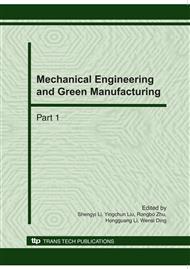p.1549
p.1554
p.1559
p.1563
p.1568
p.1573
p.1578
p.1583
p.1587
The Research and Implementation of Particle Effects Algorithm in Virtual Environments
Abstract:
As we know, when using traditional particle system to initiate the natural phenomenon, we need to deal with a lot of computation and data issues, in order solve this problem, we discuses in this chapter to combine the way of particle system and visual particle system, using vertex buffer techniques and texture mapping techniques to design elementary particle systems, which base on Visual C++ as compiler platform. using the Direct3D graphics software library to complete particle system designing ,and it successfully simulated using a small amount of particles in the flame, smoke and other special effects which not only improved the Utilization of System resources ,but also Guaranteed the Verisimilitude and Real-time in the same time.
Info:
Periodical:
Pages:
1568-1572
Citation:
Online since:
October 2010
Authors:
Keywords:
Price:
Сopyright:
© 2010 Trans Tech Publications Ltd. All Rights Reserved
Share:
Citation:


